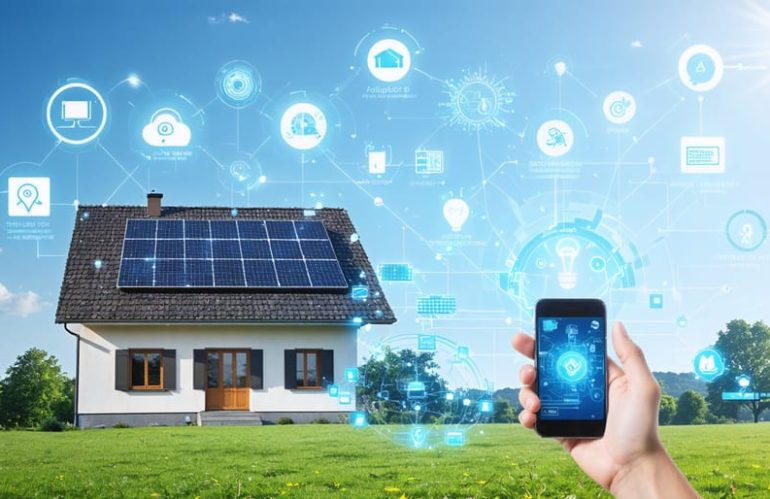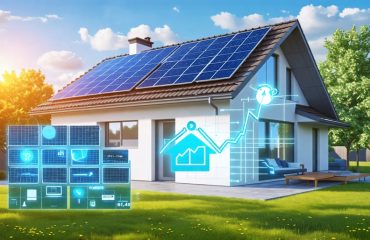Transform your residential solar system into a self-monitoring powerhouse with IoT predictive maintenance. Advanced sensors and smart algorithms now detect potential issues before they become costly problems, maximizing your solar investment’s performance and longevity. By continuously analyzing real-time data from your panels, inverters, and electrical systems, IoT technology helps prevent up to 70% of common solar system failures while reducing maintenance costs by 25-30%. This intelligent monitoring system acts like a 24/7 solar technician, tracking everything from micro-cracks in panels to subtle changes in power output patterns. For homeowners, this means fewer unexpected repairs, optimal energy production, and significantly extended system life – all while providing peace of mind through automated alerts and detailed performance insights delivered straight to your smartphone.
How IoT Sensors Keep Your Solar Panels at Peak Performance
The Eyes and Ears of Your Solar System
Modern solar systems come equipped with a network of smart sensors that act as vigilant guardians of your investment. Temperature sensors monitor both your panels and inverters, ensuring they operate within optimal ranges and alerting you before components get too hot. Power output sensors track your system’s electricity generation in real-time, helping spot any unexpected dips in performance that could signal developing issues.
Weather stations integrated into your solar setup measure sunlight intensity, rainfall, and wind conditions. This data helps predict when your panels might need cleaning or when severe weather might affect performance. Voltage and current sensors keep tabs on your system’s electrical health, while micro-inverter monitors track the performance of individual panels, pinpointing exactly where issues might arise.
These sensors work together to create a comprehensive picture of your solar system’s health. By collecting and analyzing this data continuously, your system can predict potential problems before they become costly repairs, helping you maintain peak performance year-round while maximizing your energy savings.
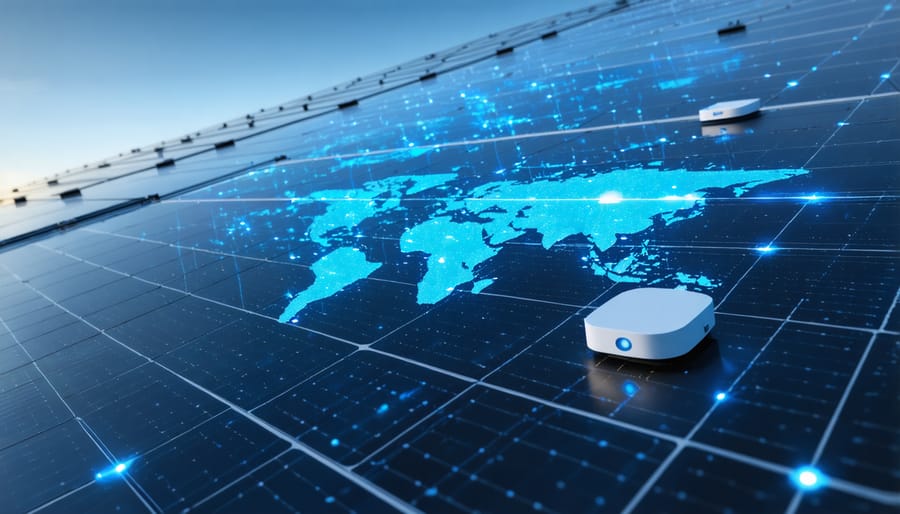
Real-Time Performance Tracking
Real-time monitoring is like having a watchful guardian for your solar system, constantly tracking its performance to ensure everything runs smoothly. Modern IoT sensors collect data on various parameters such as power output, panel temperature, and weather conditions, providing valuable insights into your system’s health. This continuous stream of information helps to optimize energy production by identifying even the smallest inefficiencies before they become significant issues.
Smart monitoring systems can detect subtle changes in performance patterns, such as gradual decreases in power output or unusual voltage fluctuations. These early warning signs allow for proactive maintenance, ensuring your system maintains peak efficiency. The data is typically accessible through user-friendly mobile apps or web dashboards, giving you real-time visibility into your system’s performance.
By leveraging this technology, homeowners can make informed decisions about maintenance timing and better understand their system’s behavior across different seasons and weather conditions. This insight not only helps maximize energy generation but also extends the life of your solar investment through timely interventions.
From Data to Dollars: Preventing Solar Panel Problems
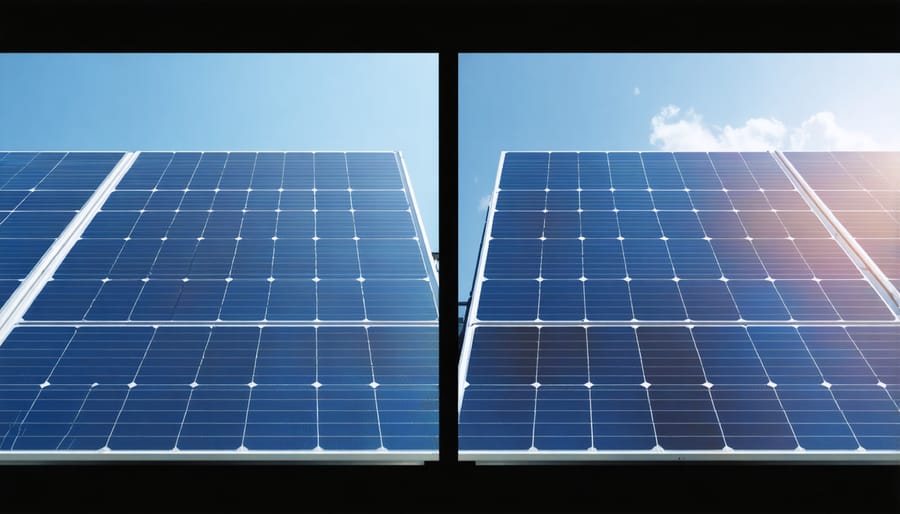
Catch Issues Before They Cost You
Think of IoT predictive maintenance as your solar system’s personal health monitor, constantly watching for signs of trouble before they become costly problems. This early warning system can detect issues like declining panel efficiency, inverter malfunctions, and connection problems while they’re still minor and inexpensive to fix.
Common problems caught early include dust and debris buildup that reduces energy production, loose wire connections that could lead to system failures, and subtle changes in power output that might indicate failing components. The system can even alert you to potential issues caused by weather damage or aging equipment before they impact your energy generation.
By monitoring performance patterns, IoT sensors can identify when panels aren’t producing as much energy as they should, even if the difference is slight. This helps you maintain peak efficiency and avoid the gradual power loss that many homeowners might not notice until their electricity bills spike.
The real beauty of this technology lies in its ability to distinguish between normal fluctuations and genuine problems. For instance, it can tell whether reduced output is due to cloudy weather or a developing panel issue, helping you avoid unnecessary service calls while ensuring real problems get prompt attention. This targeted approach to maintenance not only saves money but also extends the life of your solar investment.
Smart Maintenance Scheduling
Smart maintenance scheduling powered by IoT technology takes the guesswork out of solar system upkeep by using artificial intelligence to predict when components need attention. Instead of relying on fixed schedules or waiting for problems to occur, the system continuously monitors performance data and environmental conditions to determine the optimal timing for maintenance activities.
The AI analyzes patterns in power output, weather conditions, and component performance to identify potential issues before they become serious problems. For example, if the system notices a gradual decline in panel efficiency, it can schedule a cleaning service before dirt accumulation significantly impacts your energy production.
This predictive approach offers several key benefits. First, it helps prevent unexpected breakdowns by addressing minor issues early. Second, it optimizes maintenance timing to minimize disruption to your power generation. Third, it reduces unnecessary maintenance visits, saving you money while extending the life of your solar components.
The scheduling system also considers factors like weather forecasts and peak energy demand periods to suggest maintenance windows that won’t impact your solar production. For homeowners, this means fewer surprises, lower maintenance costs, and more consistent energy generation throughout the year. The system even sends you easy-to-understand notifications about upcoming maintenance needs, keeping you informed without overwhelming you with technical details.
Your Solar Investment, Protected
Extended System Lifespan
Predictive maintenance powered by IoT technology acts like a personal health monitor for your solar panel system, significantly extending its operational life while maintaining peak performance. By continuously analyzing data from sensors that track temperature, power output, and environmental conditions, the system can detect potential issues before they cause serious damage.
Think of it as regular check-ups for your solar installation. Just as preventive healthcare helps us live longer, healthier lives, predictive maintenance helps your solar panels perform better for longer. The typical lifespan of solar panels is 25-30 years, but with IoT-enabled predictive maintenance, you can ensure your system operates at optimal efficiency throughout its entire life cycle.
The technology identifies subtle changes in performance that might indicate developing problems, such as micro-cracks, dust accumulation, or connection issues. By addressing these concerns early, you prevent the cascading effects that could lead to costly repairs or replacements. For example, catching and cleaning dust buildup before it impacts efficiency can prevent unnecessary strain on the system.
Moreover, predictive maintenance helps maintain consistent energy production levels over time. While traditional solar panels might see a gradual decline in efficiency, systems with active monitoring and maintenance typically maintain higher performance levels, ensuring you get the most value from your investment throughout the system’s lifespan.
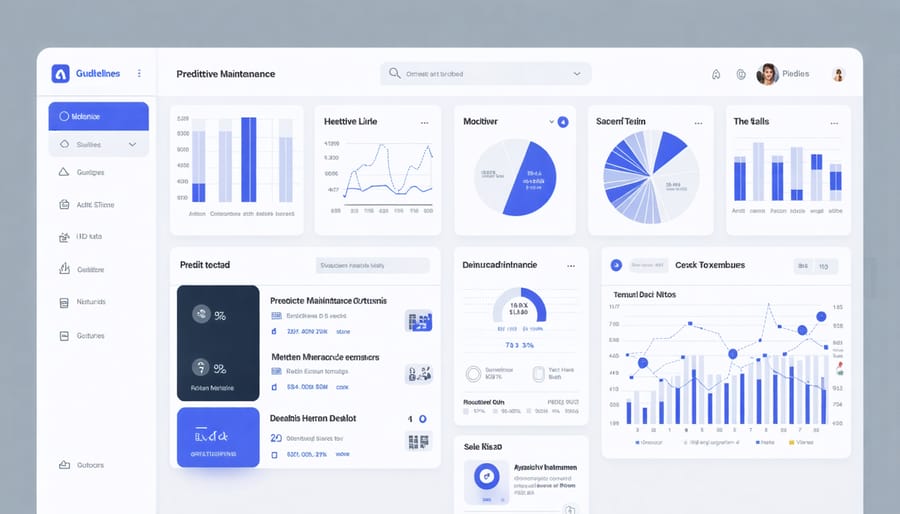
Maximum Return on Investment
IoT predictive maintenance isn’t just about preventing problems – it’s about maximizing the financial returns on your solar investment. By continuously monitoring system performance and identifying potential issues before they escalate, this smart technology helps you maximize your solar investment in several ways.
First, early detection of performance issues prevents energy production losses that could otherwise go unnoticed for months. Even small efficiency drops of 5-10% can add up to significant monetary losses over time. By addressing these issues promptly, you maintain optimal energy production and maximum savings on your utility bills.
Regular predictive maintenance also extends the lifespan of your solar components. Instead of replacing parts prematurely or dealing with catastrophic failures, you can schedule maintenance during convenient times and often fix minor issues before they become major expenses. This proactive approach typically reduces maintenance costs by 25-30% compared to reactive maintenance.
Additionally, many solar warranties require proper maintenance documentation. IoT systems automatically track and record all system parameters, ensuring you maintain warranty coverage and protecting your investment. This data-driven approach also helps optimize cleaning schedules, panel adjustments, and other routine maintenance tasks, ensuring you get the highest possible return from your solar system while minimizing unnecessary maintenance expenses.
IoT predictive maintenance represents a revolutionary step forward in how we care for and maintain our solar energy systems. By embracing this smart technology, homeowners can experience peace of mind knowing their investment is protected while maximizing their energy savings. The data-driven insights and real-time monitoring capabilities ensure that potential issues are caught and addressed before they become costly problems.
The benefits are clear: reduced maintenance costs, extended system lifespan, optimized performance, and increased energy efficiency. For environmentally conscious homeowners, this means not only protecting their investment but also ensuring their system continues to deliver maximum environmental benefits through consistent, optimal performance.
As we move toward a more sustainable future, IoT predictive maintenance will play an increasingly vital role in making solar energy more reliable and accessible. The technology continues to evolve, becoming more sophisticated yet user-friendly, making it easier than ever for homeowners to take control of their energy systems.
If you haven’t already considered implementing IoT predictive maintenance for your solar system, now is the perfect time to start. Begin by consulting with your solar provider about available monitoring solutions and compatible smart devices. The initial investment in IoT technology will quickly pay for itself through prevented failures, optimized performance, and reduced maintenance costs.
Remember, a well-maintained solar system is key to achieving your sustainability goals and maximizing your return on investment. By embracing IoT predictive maintenance, you’re not just protecting your solar investment – you’re taking an active role in building a cleaner, more efficient energy future for generations to come.

